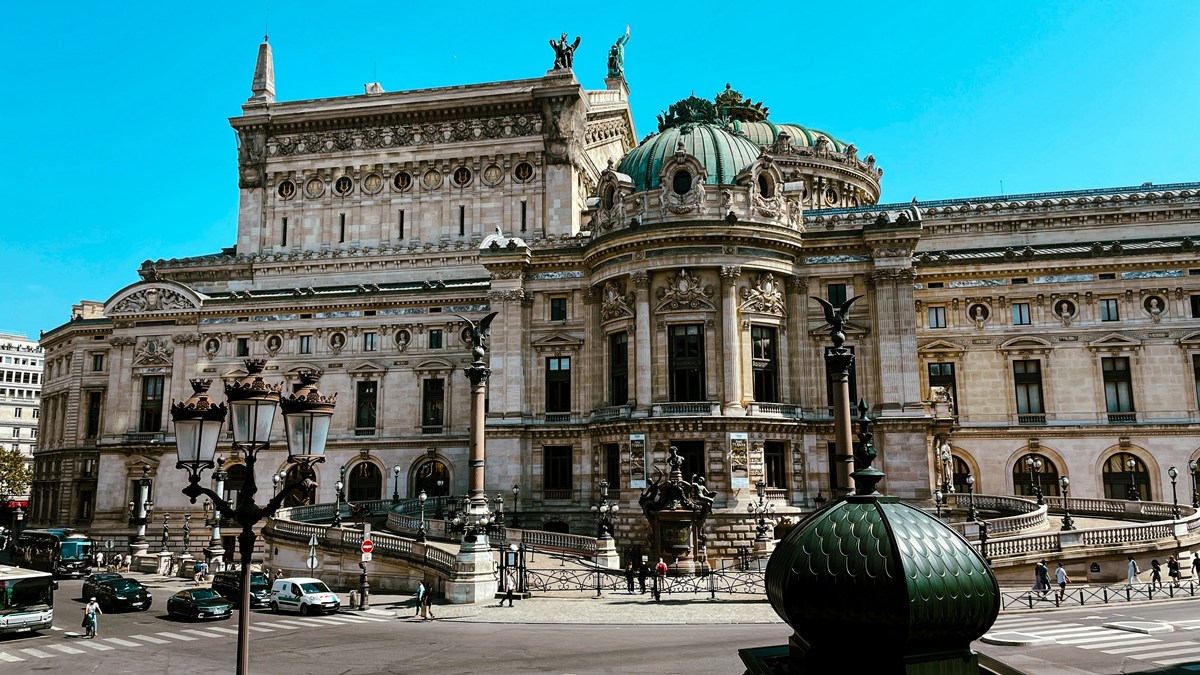Paris is a city where beauty lives not only in its streets and monuments but also within its theaters. Among them, none is as breathtaking as the Palais Garnier, better known as the Opéra Garnier. With its gilded ceilings, marble staircases, and chandeliers that seem to float in a golden glow, this 19th-century opera house is one of Paris’s most beloved landmarks.
Even if you’re not attending a performance, stepping inside feels like entering a world of music, elegance, and history. This guide will show you why Opéra Garnier is worth visiting, what to see inside, and how to make the most of your trip.
- A Brief History of the Opera Garnier
- Architectural Splendor
- Phantom of the Opera
- What to See When Visiting Opera Garnier
- Practical Information
- Why Opera Garnier Is Worth Visiting
- Combine Opera Garnier with Nearby Attractions
- Tips for the Best Experience
- Opera Garnier in Numbers
- Opera Garnier: A Stage for Your Imagination
A Brief History of the Opera Garnier
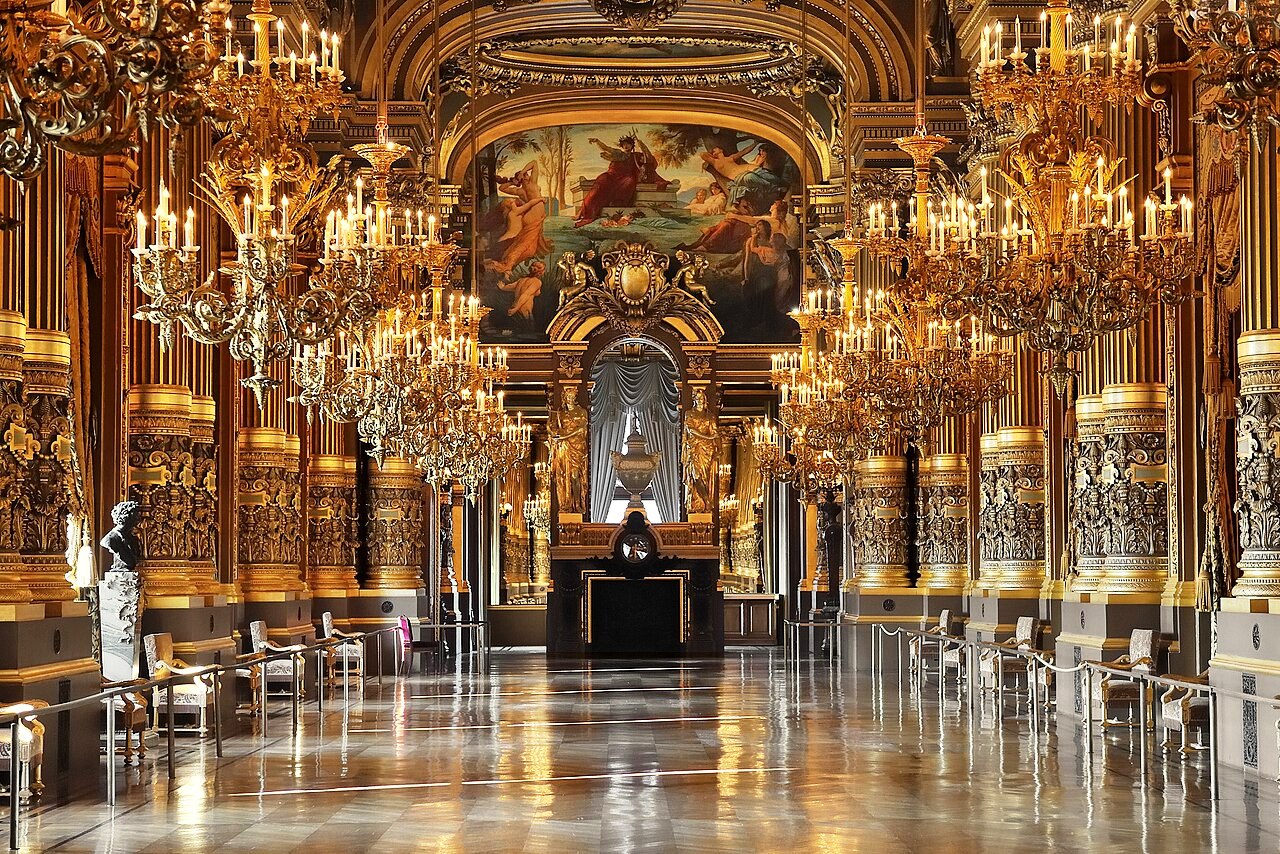
The Opéra Garnier was commissioned by Napoleon III during the great urban renewal of Paris in the mid-19th century, led by Baron Haussmann. After an assassination attempt near the site of the old opera house, Napoleon III decided the city needed a new, grand theater that symbolized both imperial power and cultural prestige.
In 1861, a design competition was launched, and the winner was Charles Garnier, a relatively unknown 35-year-old architect. His vision combined classical symmetry with exuberant ornamentation, creating what would become a masterpiece of Beaux-Arts architecture.
Construction took over 14 years, complicated by the Franco-Prussian War, the fall of the Second Empire, and the Paris Commune. Finally, the building opened in 1875 with a lavish inauguration attended by dignitaries from across Europe.
Since then, the Opéra Garnier has become both a functioning theater and a monument to 19th-century grandeur, admired by millions each year.
Architectural Splendor
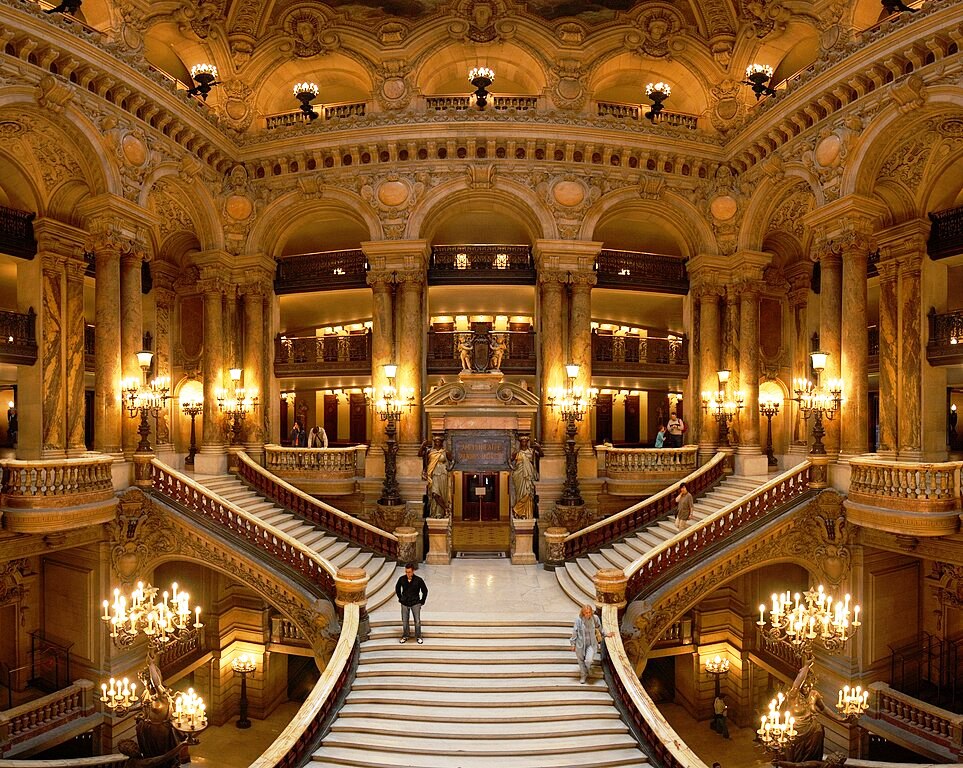
Exterior Grandeur
From the outside, the Opera Garnier is pure spectacle. Its facade boasts columns, friezes, statues of muses, and gilded figures glimmering in the Parisian light. The two golden winged figures — Harmony and Poetry — crown the roofline, while busts of famous composers such as Mozart and Beethoven honor the history of music.
The Grand Staircase
Step inside, and the first thing that takes your breath away is the Grand Escalier. This monumental staircase of white marble, framed by balustrades and columns, was designed as a stage in itself. Guests dressed in their finest evening wear would ascend the stairs under the admiring gaze of others — theater before the curtain even rose.
The Auditorium
The horseshoe-shaped auditorium is intimate yet richly decorated, with red velvet seats and a massive crystal chandelier hanging from the dome. In 1964, Marc Chagall painted a colorful ceiling fresco that now hovers above the stage, blending myth, music, and modern art in dazzling harmony.
The Grand Foyer
The Grand Foyer rivals the Hall of Mirrors at Versailles. With gilded moldings, painted ceilings, chandeliers, and floor-to-ceiling mirrors, it is a ballroom of light and opulence. Strolling here feels like walking inside a jewel box.
Behind the Grandeur
Beyond the golden ceilings and chandeliers, the Opéra Garnier is also an architectural giant. It has seven underground and ten above-ground levels, reaching a total height of 56 meters. Beneath its labyrinthine corridors, more than 1,000 people work daily to keep the opera running. The building even houses two ballet schools and, remarkably, an underground stable once used for the opera’s horses.
Phantom of the Opera
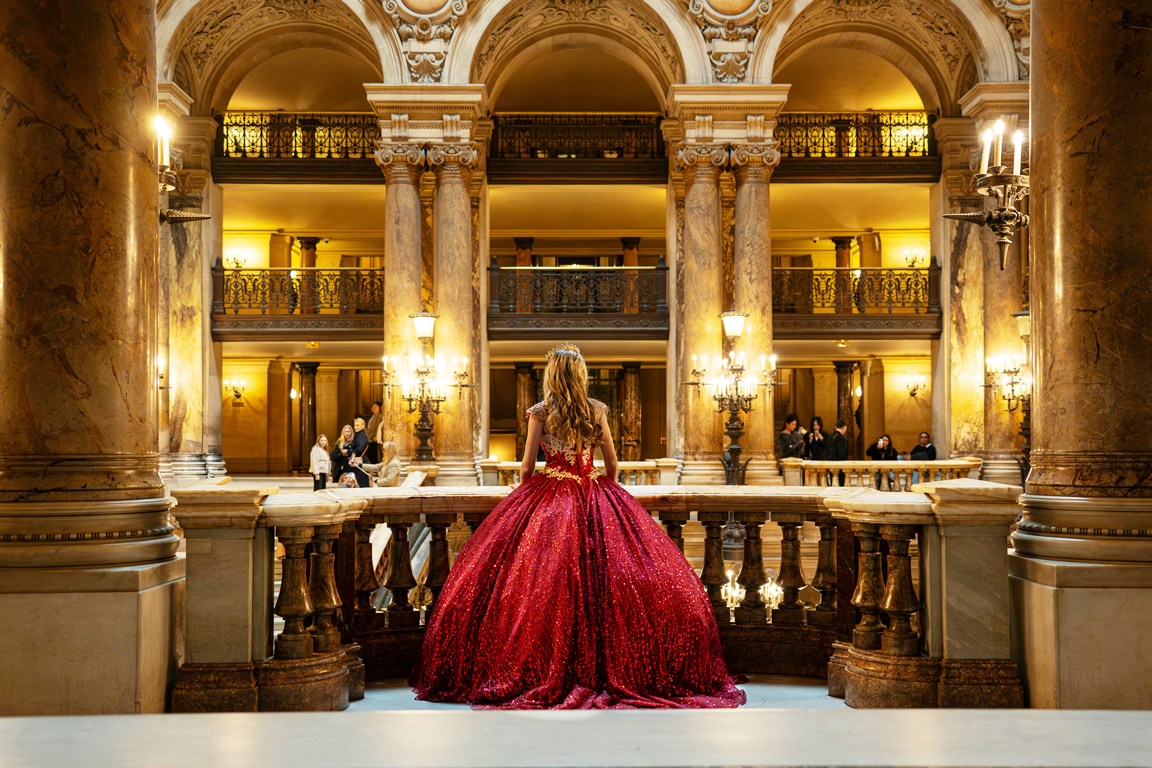
The Opera Garnier is forever linked with Gaston Leroux’s novel The Phantom of the Opera, published in 1910. The story of a masked figure haunting the opera and falling in love with a singer was inspired by legends surrounding the building.
One such tale is the underground lake beneath the opera house, a real water reservoir created to stabilize the marshy ground during construction. While it’s not accessible to visitors, it added to the novel’s gothic atmosphere and inspired countless adaptations, including Andrew Lloyd Webber’s world-famous musical.
What to See When Visiting Opera Garnier
Even without attending a show, a visit to the Opera Garnier is unforgettable. Here are the highlights:
- Grand Staircase: The most photographed spot, with its sweeping marble stairs.
- Auditorium: Marvel at the chandelier and Chagall’s ceiling (though access may depend on rehearsals).
- Grand Foyer: A golden hall where Parisians once mingled during intermissions.
- Rotonde des Abonnés: Originally designed for VIP subscribers, now part of the visitor route.
- Library-Museum (Bibliothèque-Musée de l’Opéra): Displays costumes, set designs, and archives of opera history.
Practical Information
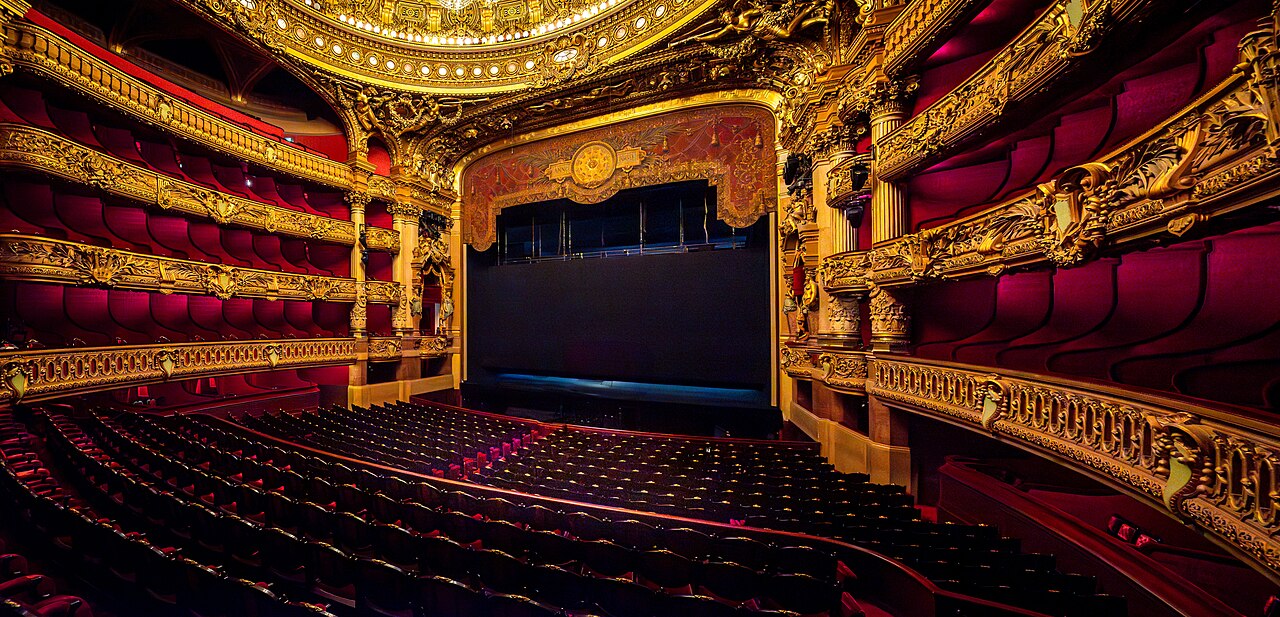
- Location: Place de l’Opéra, 9th arrondissement, Paris.
- Metro: Opéra (Lines 3, 7, 8) or Auber (RER A).
- Opening Hours: Generally open daily from 10:00–17:00 (last entry 16:30). Hours may change if performances are scheduled.
- Tickets: Entry is around €15 for adults. Reduced prices for students and children. Free entry for EU residents under 26 on certain days.
- Performances: Opera and ballet performances are ticketed separately, and prices vary. Booking early is essential.
Official info and ticket reservations: Opéra Garnier official site.
Why Opera Garnier Is Worth Visiting
The Opera Garnier is not only for opera lovers. It’s a celebration of art, architecture, and imagination. Whether you’re admiring the gilded ceilings, reliving the mystery of the Phantom, or enjoying a ballet, the building itself is the star of the show.
It’s also wonderfully located in the 9th arrondissement, close to Galeries Lafayette and the Palais Royal, making it easy to combine with shopping and sightseeing.
Combine Opera Garnier with Nearby Attractions
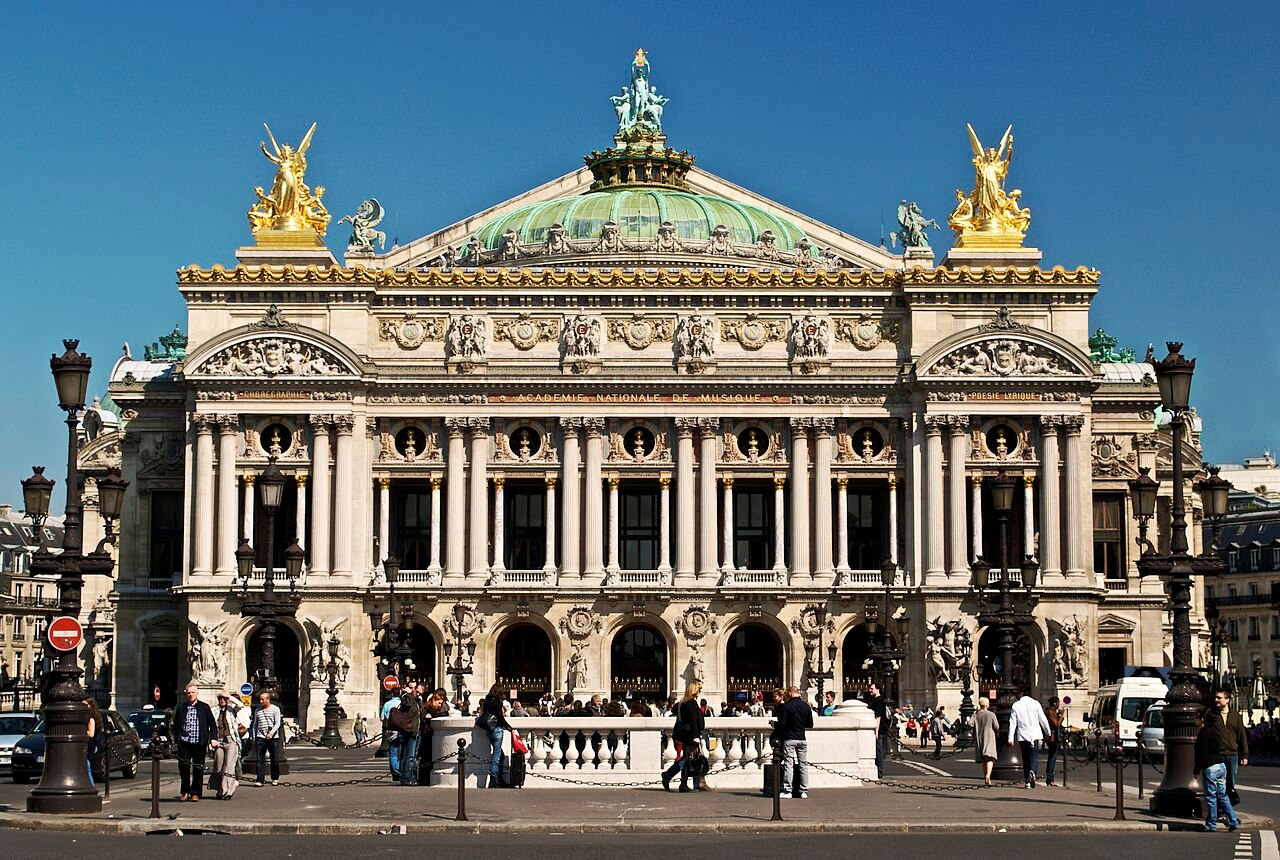
- Galeries Lafayette Rooftop: Just a few minutes’ walk, offering free panoramic views of Paris.
- Palais Royal: Elegant gardens and historic arcades, perfect for a relaxed stroll.
- Louvre Museum: A short metro ride away, one of Paris’s must-sees (see our Louvre tips here).
- Montmartre: The artistic heart of Paris, reachable within 20 minutes.
For more inspiration:
- Paris Arrondissements Guide
- Planning a Trip to Paris: What You Should Know
- Top 10 Mistakes in Paris – and How to Avoid Them
Tips for the Best Experience
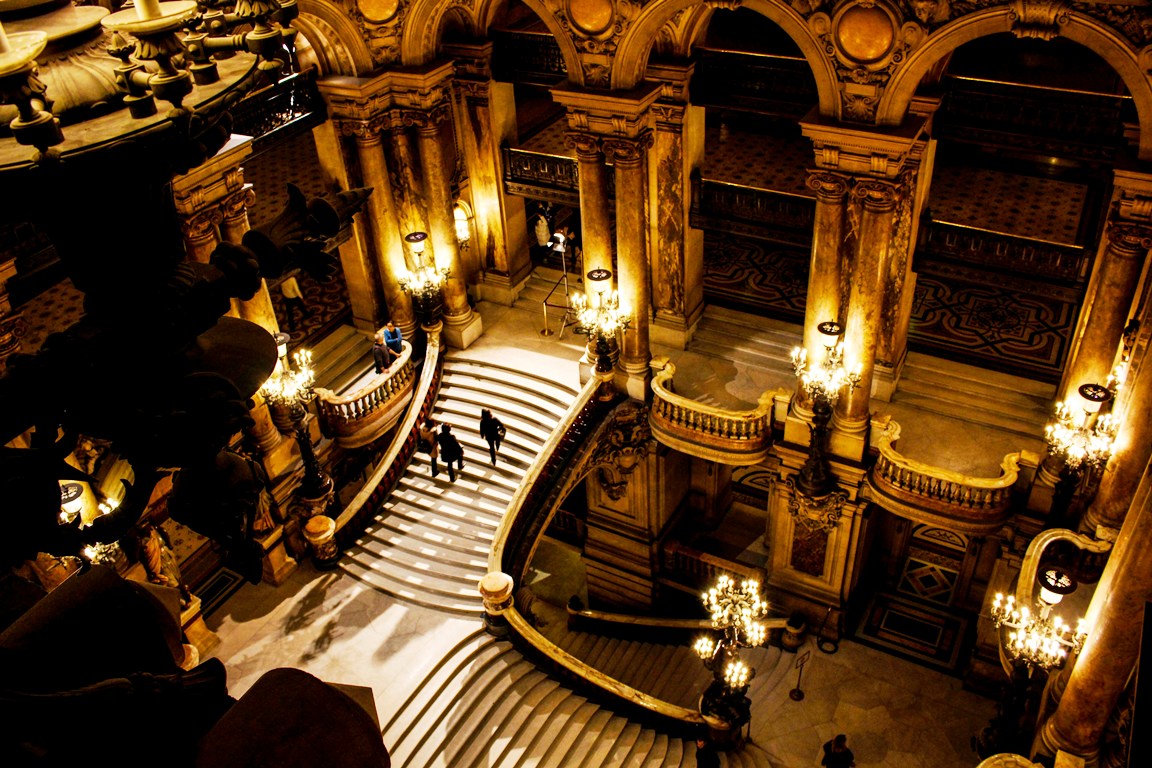
- Visit early in the morning to enjoy quieter halls.
- If possible, attend a ballet performance — the Paris Opera Ballet is one of the oldest and most prestigious in the world.
- Don’t skip the rooftop views from nearby department stores for photos of the Opéra Garnier’s gilded statues.
- Check for temporary exhibitions — the opera often hosts displays of costumes and set designs.
Opera Garnier in Numbers
- Opened: 1875
- Architect: Charles Garnier
- Length: 173 meters
- Seats in auditorium: 1,979
- Weight of chandelier: 7 tons
- Dome painted by: Marc Chagall in 1964
Opera Garnier: A Stage for Your Imagination
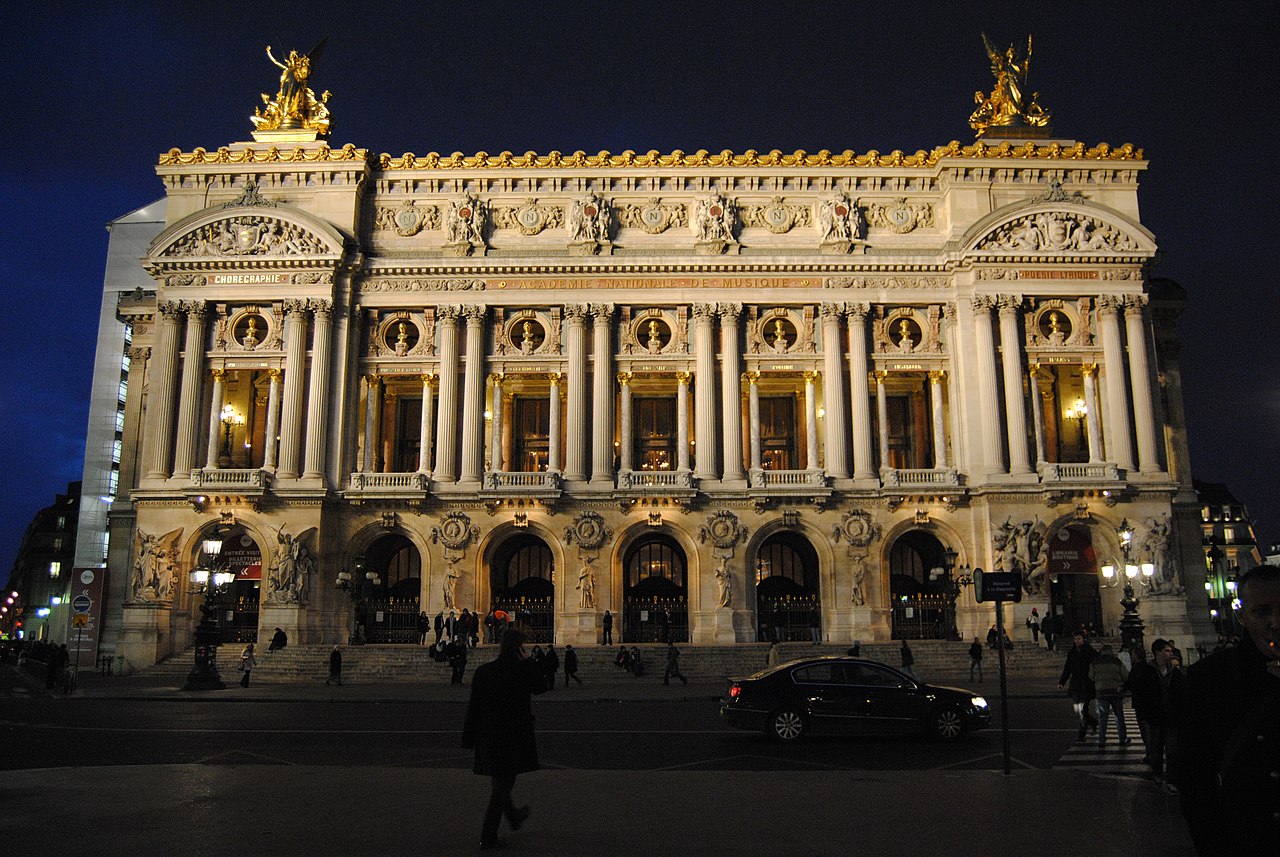
The Opéra Garnier is more than an opera house — it’s a palace of dreams. From the sparkle of its grand staircase to the whisper of the Phantom’s legend, every corner tells a story. Whether you explore it for an hour or attend a performance, it leaves an impression that lingers long after the curtain falls.
And with the Paris For You app, you’ll never miss a detail. Discover curated locations, themed maps, quizzes, and guides in 26 languages — all offline, right in your pocket.
Download on Android
Download on iPhone
